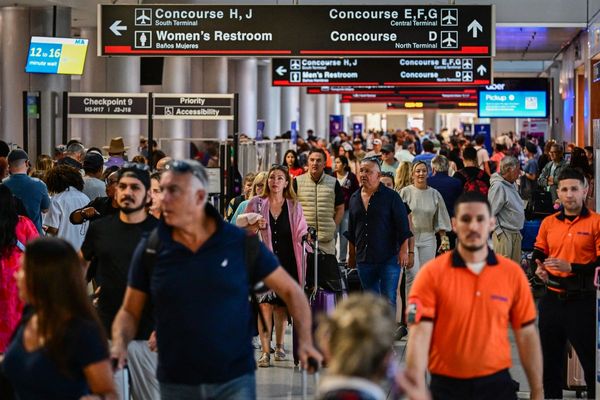Moving out of state is one of those life milestones that feels both exciting and nerve-wracking. Whether you're chasing a job opportunity, following love, or simply ready for a change of scenery, there’s no denying that relocating across state lines is a major life shift. But don’t worry, this guide will walk you through everything you need to know about how to move to another state, from early planning to settling in.
We’re not going to sugarcoat it, moving is hard. But with the right approach, it doesn’t have to be overwhelming. Let’s break it all down.
Ask Yourself the Big Questions
Before you start calling movers or packing boxes, pause and reflect. Why are you moving? What are you hoping to gain? Knowing your "why" will keep you grounded through the inevitable hiccups.
Consider:
- What are the job prospects like?
- How does the cost of living compare?
- Are you moving for family, school, or a new lifestyle?
- Will this move be temporary or long-term?
Sometimes, people move with just a gut feeling, and that’s okay too. But clarity will help you make smarter decisions along the way.
Do Your Research on the New State
Every state has its own vibe, laws, taxes, and quirks. If you're wondering how to move to another state without feeling like a fish out of water, start with good old-fashioned research.
Look into:
- Cost of living
- Climate and weather patterns
- Transportation options
- Local culture and lifestyle
- Crime rates and school systems (especially if you have kids)
Know What You Can Afford
Interstate moves can get pricey, fast. That’s why one of the first steps in how to move to another state is creating a detailed budget.
Your moving costs may include:
- Hiring professional movers
- Renting a moving truck or container
- Gas, lodging, and meals during travel
- Security deposits or down payments
- Utility setup fees
- Storage unit costs
Add at least a 10-15% buffer for unexpected expenses. It’s better to be over-prepared than scrambling for cash mid-move.
Visit the New Area
Nothing beats first hand experience. If your schedule and budget allow, take a trip to the new state and explore neighborhoods, grocery stores, coffee shops, and commute routes.
Use this time to:
- Drive through potential areas to live
- Talk to locals
- Tour homes or apartments
- Check out parks, gyms, or churches
- Test out public transportation
Even a short weekend trip can make a world of difference in your confidence about the move.
Decide Whether to Hire Movers or DIY
One of the most critical decisions in how to move to another state is choosing how you’ll get your belongings there.
Here are your options:
Hire Professional Movers:
- Best for long-distance or full-house moves
- Less stress, but higher cost
- Choose licensed, insured, and well-reviewed companies
Rent a Moving Truck:
- Cheaper, but a lot more labor
- You’ll be doing the packing, loading, and driving
Use a Moving Container:
- Midway option, load it yourself, but someone else drives
- Good for flexible delivery schedules
Each option has pros and cons, so pick based on your budget, timeline, and willingness to get your hands dirty.
Start Decluttering Early
The less you move, the less you spend. Simple math, right? So before you tape up a single box, start downsizing.
- Use the 3-box method: Keep, Donate, Toss
- Be ruthless. Haven’t worn it in a year? Gone. Broken lamp that you’ll “maybe fix someday”? Toss it. This is your chance to start fresh.
- Hold a yard sale or list items on Facebook Marketplace. The extra cash can go straight into your moving fund.
Set a Moving Timeline
When planning how to move to another state, timelines are your best friend. Create a simple calendar that includes:
- Move-out date
- Utility shut-off dates
- Last day of work or school
- Travel days
- Move-in and lease start dates
Working backwards from your move date will keep you from missing important deadlines or scrambling at the last minute.
Secure Housing in the New State
Unless you’re staying with friends or family, you’ll need to lock down housing before the move.
Tips:
- Use reputable websites like Zillow, Apartments.com, or a local realtor
- Beware of rental scams (if it seems too good to be true, it is)
- Consider short-term rentals or extended stay hotels if you're undecided
Make sure you understand your new lease agreement fully, especially things like pet policies, parking, and move-in fees.
Update Your Address
Changing your address is more than just USPS forwarding, though that’s a great place to start.
Don’t forget to update:
- Bank accounts and credit cards
- Subscriptions and memberships
- Your employer and payroll
- Tax agencies
- Health and auto insurance providers
- Friends and family (maybe send a fun “we’ve moved” card)
Doing this early can save you headaches like missed bills or delayed deliveries.
Handle Legal and DMV Requirements
Each state has its own rules, so look into what you’ll need to do after the move.
Most states require you to:
- Get a new driver’s license (usually within 30 days)
- Register your vehicle and get new plates
- Register to vote in your new district
- Transfer professional licenses, if applicable
Set reminders to knock these tasks out quickly. You don’t want to deal with legal trouble on top of moving stress.
Plan Your Travel Wisely
Driving to your new state? Flying and shipping your car? Either way, make a travel plan that includes:
- Route mapping (account for weather, tolls, traffic)
- Hotel bookings if it’s more than a one-day trip
- Snacks, water, and a car emergency kit
- Entertainment for kids or pets if they’re coming along
If you’re flying, remember to book early and confirm arrangements for pets or excess baggage.
Pack Strategically
There’s packing… and then there’s smart packing. Learn from the people who’ve moved ten times and finally figured it out.
Do:
- Label every box with contents and room name
- Pack a first-night box with essentials (toothbrush, meds, towels)
- Wrap breakables in towels to save space
- Use vacuum-seal bags for clothes and bedding
- Keep important documents (passports, medical records) in a personal bag
And yes, always overestimate how many boxes you’ll need.
Say Goodbye the Right Way
Leaving a place you’ve called home can be emotional. Don’t skip the goodbye part.
- Host a casual get-together with friends
- Visit your favorite local spots one last time
- Take photos of your old home
- Write thank-you notes to neighbors or coworkers
It helps with closure and gives you warm memories to look back on during the tough first days in your new home.
Settling Into Your New State
You made it! The boxes are in. The keys are yours. Now what?
- Unpack slowly, start with the kitchen and bedroom
- Explore your neighborhood on foot
- Introduce yourself to neighbors
- Find a favorite coffee shop or park
- Check out local events and community boards
The first few weeks can be lonely, but lean into the discomfort. Give yourself time to adjust, and soon enough, your new place will start to feel like home.
Build a Support Network
One of the hardest parts of how to move to another state is starting over socially. But building connections is vital.
Here’s how to meet new people:
- Attend local events and meetups
- Join clubs, gyms, or classes
- Get involved in volunteering or local charities
- Say yes to coffee invites, even if you're shy
Everyone’s been “the new person” before. People are often more welcoming than you expect.
You Can Do This
Relocating to a new state isn’t easy, but it’s absolutely doable. With solid planning, a little patience, and a lot of heart, you can make the transition smoother than you think.
And remember, whether you're moving to St. Louis in Missouri or relocating to the Pacific Northwest, the journey is just as meaningful as the destination
So take a deep breath, grab a pen, and start that checklist. Your next chapter is waiting.







